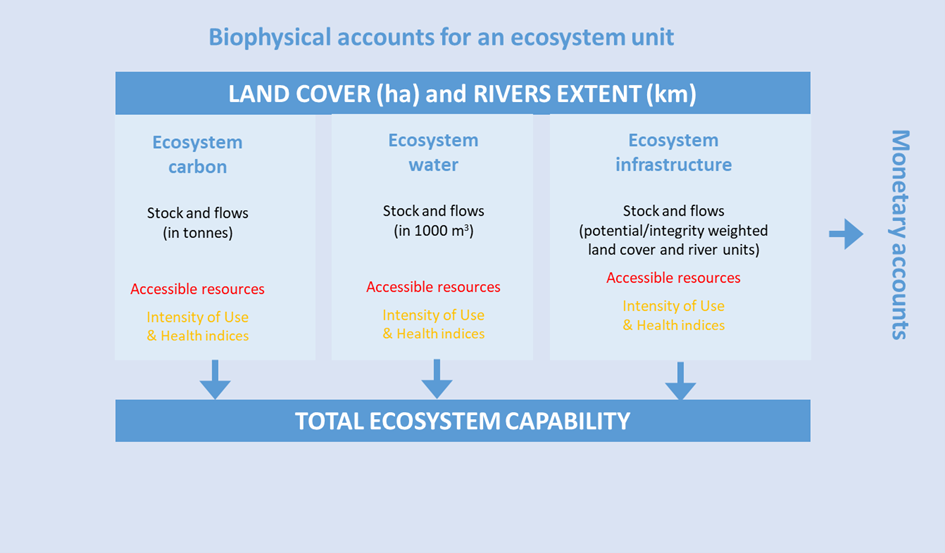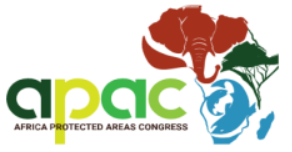Natural Capital Accounting Frameworks
Natural Capital Accounting (NCA), also known as ecosystem accounting, provides evidence-based information for conservation and management of natural resources. The United Nations Statistical Commission adopted the System of Environmental Economic Accounting – Ecosystem Accounting (SEEA – EA) in 2021. It constitutes an integrated and comprehensive statistical framework for organizing data about habitats and landscapes, measuring the ecosystem services, tracking changes in ecosystem assets, and linking this information to economic and other human activity.
The Ecosystem Natural Capital Accounting (ENCA) framework, which was set-up as a response to the requirement of the Convention on Biological Diversity (CDB) for incorporating biodiversity values into national accounting, the sustainable capacity of ecosystems to supply the services needed by humankind and assess human accountability for ecosystem degradation by inappropriate management, is a framework largely compatible with SEEA EA and used in some countries.

Sys4ENCA Tool
VITO has developed a QGIS plug-in to semi-automate the ENCA framework, named Sys4ENCA. This tool computes the yearly ecosystem value of targeted areas by combining the contribution of ecosystem carbon, water, and infrastructure-based services. The results are available on the Sys4ENCA platform through maps and tables, which can be used by the stakeholders to identify critical areas (hotspots) and assess ecosystem degradation and improvement, as well as the potential causes of changes.
The ENCA methodology and the Sys4ENCA tool has been tested in several case studies:
- PAPBIO, in collaboration with IUCN, in two cross-country protected areas in West-Africa (Niokolo-Bafing-Falémé – Senegal and Guinea; WAP complex – Niger, Burkina Faso and Benin).
- PECOV, in collaboration with UNEP, an eco-villages project in Madagascar.
The Sys4ENCA tool and methodology can be used at different geospatial levels:
- Tier-1, at country level or a group of countries, mostly computed based on global public datasets.
- Tier-2, focussing on transborder ecological areas or regions, integrating national or regional datasets.
- Tier-3, focusing on local areas like protected areas or restoration projects, integrating regional and local datasets.
Publications:
- Van den Hoof, C., De Nocker, L., Sanon, A.A., Tiemtoré, S., Buchhorn, M. & Smets, B. (2024). Development of a regional capacity in natural capital accounting of protected areas in West Africa.
- Buchhorn, M., Van den Hoof, C., Smets, B., Weber, J. L., Sanon, A. A., & Tiemtoré, S. (2023). Facilitating the Management of Protected Areas through Multi-Level Ecosystem Accounting on an Example in West Africa. Sustainability, 15(12), 9198.
VITO's Natural Capital Accounting & Biodiversity Services
For more information on the work of VITO on Natural Capital Accounting and biodiversity, please visit this webpage: https://remotesensing.vito.be/services/natural-capital-accounting-biodiversity.

